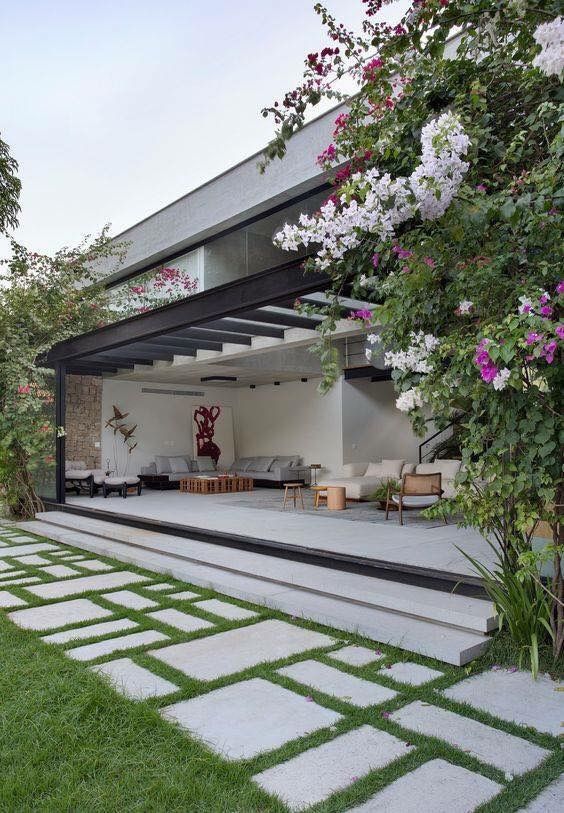#16127. Open façade with green framing: merging interior and landscape

The image showcases a modern minimalist house with an impressive open façade. The architectural solution is based on a harmonious interaction between internal and external spaces through the use of a large sliding glass system that completely erases the boundary between the interior and the garden.
The façade features clean geometric lines and contemporary materials. The upper part of the structure has a laconic rectangular shape with light-colored finishing, creating a contrast with the dark metal elements of the lower section. Particularly noteworthy is the canopy with a ribbed ceiling structure that protects the open living area from precipitation and direct sunlight while simultaneously serving as an important architectural element of the composition.
The natural component plays a significant role in the overall perception of the façade — flowering vines with white and fuchsia blooms literally frame the structure, softening the strictness of geometric forms. This "green façade" technique adds organic quality to the building and integrates it into the surrounding landscape.
The transition from house to garden is organized through wide concrete steps and original paving in the form of square slabs with grass growing between them. This pathway design creates a rhythmic pattern and emphasizes the contemporary aesthetics of the entire ensemble.
These façade design techniques can be adapted for houses of various sizes: using large glass surfaces to increase natural light, integrating greenery into the façade structure, creating a smooth transition between house and garden through a terrace, and playing with contrasts of light and dark materials to create visual interest.